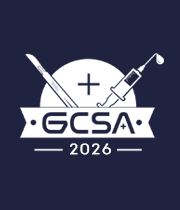Endoscopic Thoracic Sympathectomy
Endoscopic Thoracic Sympathectomy (ETS) is a minimally invasive surgical procedure designed to treat excessive sweating (hyperhidrosis) and certain other conditions by interrupting the sympathetic nerves responsible for regulating sweat production. Typically performed under general anesthesia, ETS involves making small incisions in the chest through which a tiny camera (endoscope) and surgical instruments are inserted. During the procedure, the surgeon identifies and selectively cuts or clamps the sympathetic nerves that control sweating in the affected area, usually the palms, face, or armpits. By disrupting these nerves' signals, ETS aims to reduce or eliminate excessive sweating in the targeted regions. While ETS is often effective in alleviating hyperhidrosis, it may carry risks and potential side effects such as compensatory sweating (increased sweating in other areas), nerve damage, or Horner's syndrome (characterized by drooping eyelids and decreased pupil size). Patients considering ETS should discuss its benefits, risks, and potential alternatives with their healthcare provider. The procedure's outcomes can vary, and careful evaluation of individual circumstances is crucial to determine its suitability. ETS remains a viable option for those seeking relief from severe hyperhidrosis when other treatments have proven ineffective. However, it's essential to weigh the potential benefits against the risks associated with the surgery before making a decision.



Title : Spontaneous colonic perforation in a pediatric patient with acute febrile lllness: A case report
Abhiraj Yadav, Manipal College of Medical Sciences, Nepal
Title : Unusual cause of small bowel obstructions in infants: A warning letter to parents
Gamal Al Saied, Al-Azhar University, Egypt
Title : From panic to protocol: A ?IP on developing a paediatric breast referral pathway
Neriah Mangion, University Hospital Sussex NHS Foundation Trust , United Kingdom
Title : Improving scrotal examination in male patients presenting with acute abdominal pain: An audit and quality improvement intervention
Maab Elsaddig, University Hospital Lewisham, United Kingdom
Title : Mapping pediatric general surgery training in low and middle income countries: A scoping review
Habba Mahal, University of Alberta, Canada
Title : Improving implementation of enhanced recovery after cesarean section protocol in resource limited setting of Koidu Government Hospital Sierra Leone 2024/25. A quality improvement project from evidence to reality
Hailemariam Getachew, PIH, Sierra Leone